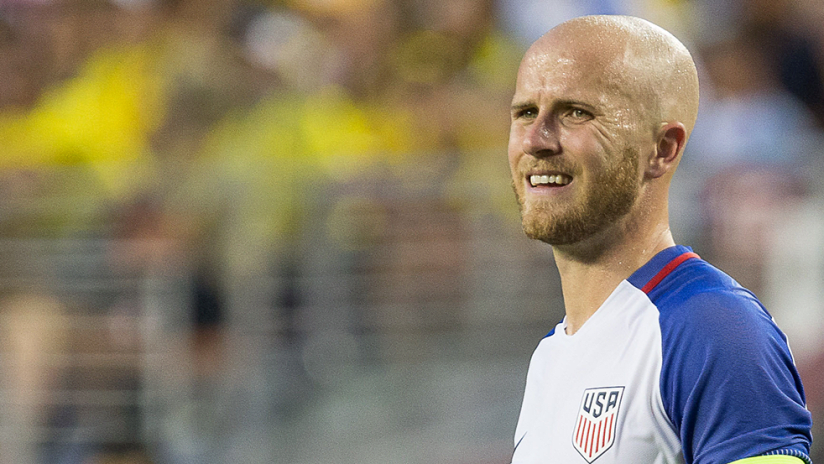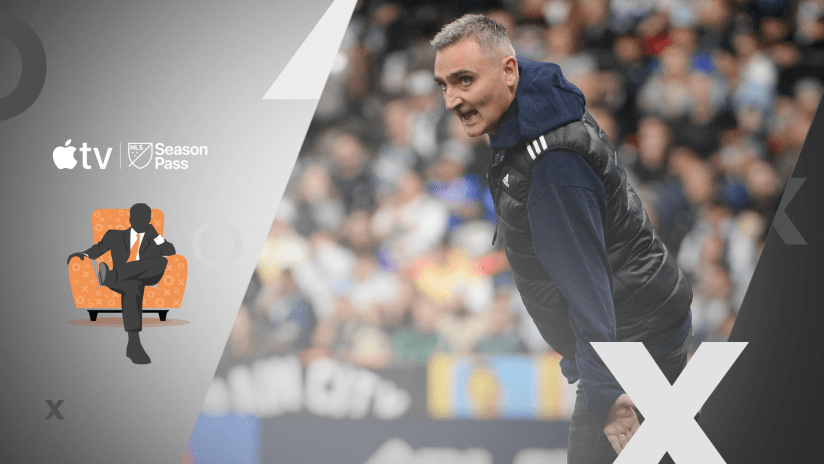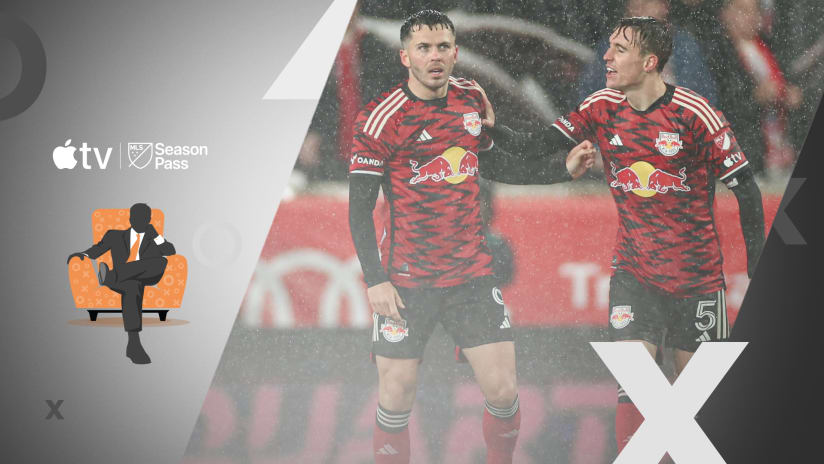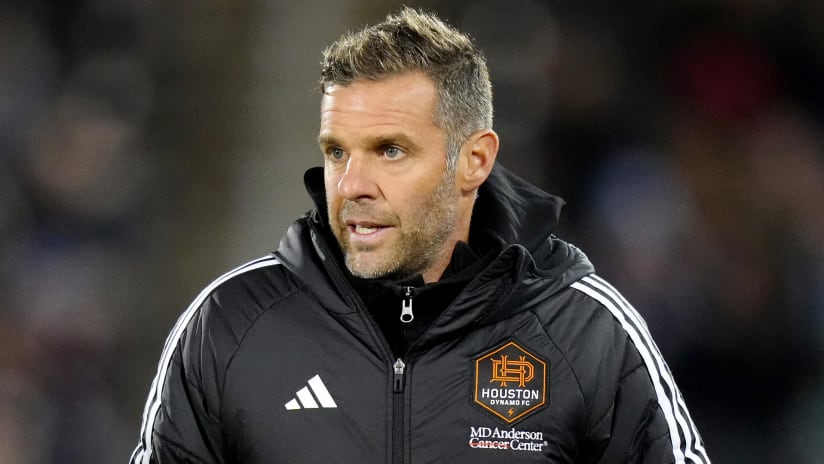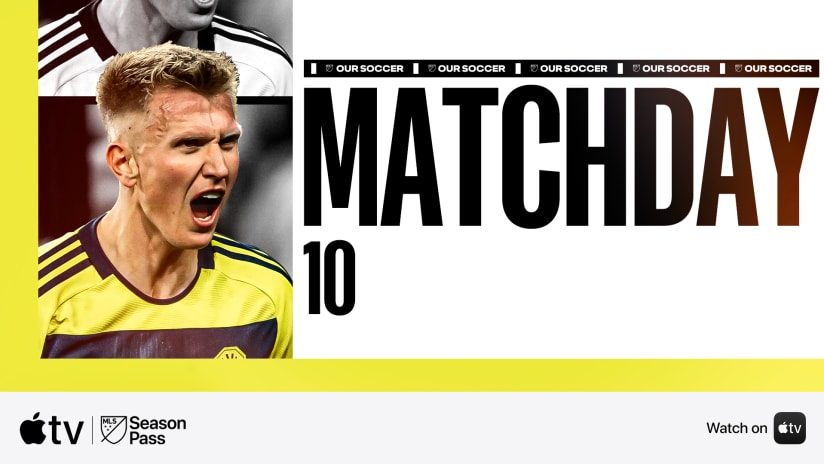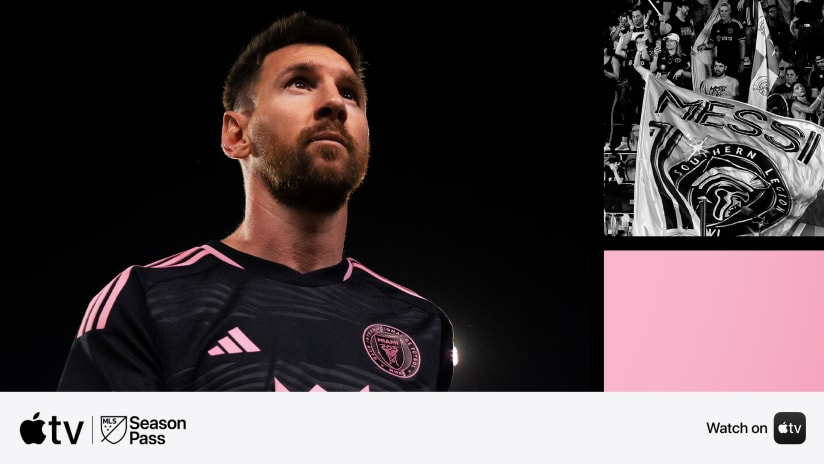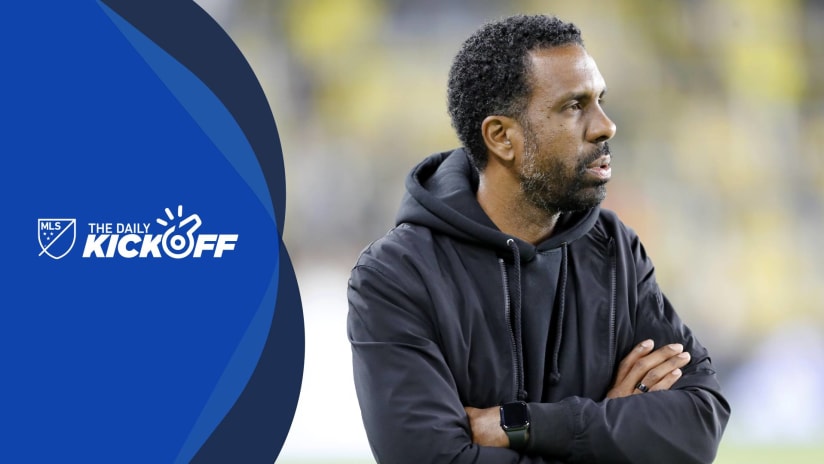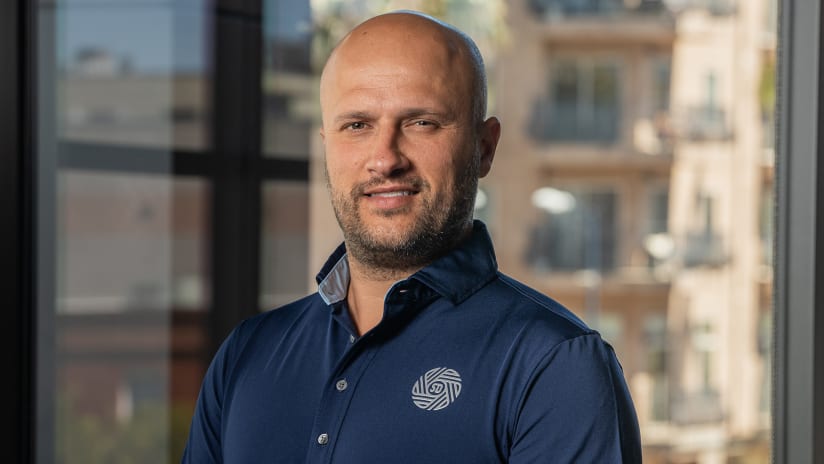Ok, here we finally are at the threshold of what Jurgen Klinsmann identified as the goal for this 2016 Copa America: A berth in the semifinals. Standing in the way of the USMNT's target is a very good and very explosive Ecuador team on Thursday night (9:30 pm ET; FS1, Univision, UDN).
I need to emphasize this: Ecuador are a very good team. They're 13th in the FIFA rankings, second in CONMEBOL qualifying, and 14th in Elo ratings. A loss to them would not be a cause for shame, though a blow-out loss would. A win would probably call for a celebratory fist-pump rather than an Alan Pardew-style sideline dance – the US are narrow favorites, after all.
These two teams met just a few weeks back in a friendly that the US won 1-0. The result wasn't particularly significant; the way the US played in the second half, jumping from 43 percent of possession to 55 percent while settling into some sort of rhythm, that was. Feel free to chalk it up to whatever you want – I personally see that as the effect of putting Michael Bradley in at defensive midfield, a true No. 6 to shield the backline and distribute from deep.
That was Bradley's first run-out as a No. 6 under Klinsmann in recent memory, and he's started each of the following four games in that spot even as the formation and personnel around him as been adjusted (sometimes a lot, but more often a very little). During that time the US have not conceded a goal from the run of play.
Which is all to say that the US have a better deep midfield, defense and goalkeeper than what Ecuador boast. On the flip side, Ecuador's four-man attack is among the tournament's best, and a pretty clear step above what the US bring to bear – even if they're not exactly an unstoppable juggernaut:
Let's take a look at how this one will shake out:
What they'll do
Direct up the middle, diagonal to the right wing, combo up the left
Ecuador have three main avenues of attack: One I'd consider to be pure counterattack, another would be quick transition from defense to offense, and the third from possession and patient build-up. This doesn't mean that's all they do, or all they're capable of in each segment of the field. Rather, it's just an indication of where their bread is most often buttered.
Let's start with the obvious: La Tricolor have a stable of forwards who can run like hell, a list that includes ex-Chivas USA man Miller Bolanos. Bolanos is the most creative of the three, with Jaime Ayovi providing more of a hold-up presence and Enner Valencia of West Ham just being an absolute star. Valencia can score ridiculous goals in just about any situation, but he's at his best bursting through the backline and just outrunning everybody else – he excels at playing off the back shoulder and busting too-slow offside traps.
Option B is a quick diagonal from central midfield to right wing Antonio Valencia, who didn't play the last time the two teams met. Valencia is more of a rugged two-way presence than a superb individualist, but he's also the kind of guy who can complete plays that the rest of the team builds for him (there's a reason he's been with Manchester United for so long). In the group stage Ecuador repeatedly got the ball to him thanks to the one-touch passing of midfielder Christian Noboa, and any time Fabian Johnson overlaps the most immediate danger will be a US turnover followed by a Noboa bender straight into Valencia's stride.
The left and right side for Ecuador are very different, and that brings us to Option C. The most creative midfielder in the team is left winger Jefferson Montero. He'll be inverted and running directly at goal, and he'll be joined on the overlap by left back Walter Ayovi who, like Valencia, did not play against the US.
Ayovi will be joining Montero a lot. A lot. A lot. A lot:
That's their map from the second half against Peru in a 2-2 draw. Green arrows are completed passes, blue is an assist, and yellow is a key pass (a pass that leads directly to a shot). They absolutely swamped the Peruvians down that side in search of an equalizer, and eventually found it.
How to solve it
Separate the left side & force Noboa to play back-passes
Montero and Ayovi are good players individually, but they're deadly when they can combine. If the US can cut off the supply from one to the other (or vice-versa), that will go a long way toward defusing the most dangerous stuff Ecuador bring to the table in possession.
This is easier said than done, but it's something worth figuring out, and in Alejandro Bedoya Klinsmann may have a one-man solution. I'm not going to suggest that Bedoya should man-mark Ayovi, but I'd expect him to stay a little bit deeper than usual and to be paying particular attention any time Ayovi crosses the midfield stripe. I also expect Michael Orozco (yes, it'll be him at right back in place of the suspended DeAndre Yedlin) to be ultra-conservative in his positioning. Make that side of the field a mud puddle and force Ecuador to play elsewhere.
"Elsewhere" probably means "through Noboa," and this means it's time for the Jermaine Jones Show. The effect of Bradley at D-mid is that Jones is freed of most responsibilities and can just Russell Westbrook himself all over the game, destroying teams with his unmatchable athleticism:
Goodness. Just look at the ground Jones covered in the build-up to his goal. The guy is 34! pic.twitter.com/ylKQYTeAcD
— Ryan Tolmich (@RyanTolmich) June 8, 2016
His ability to close opposing midfielders down is a weapon the US have to use. If he's able to target Noboa that'll force youngster Carlos Gruezo of FC Dallas – more destroyer than distributor – to do much of the heavy lifting in terms of connecting the deep midfield to the attack.
Obviously none of the above matters if the US can't hold their line correctly. Blown offside trap against Ecuador = quick, painful death.
What we'll do
Ball reversals to punish overlaps & make Ecuador chase
The US haven't been a dominant possession team thus far, but they've been better with the ball than in each of the previous two tournaments – an improvement born of playing guys mostly in their right spots and giving them a good, long run of games together.
The most effective bits thus far have obviously come in transition, which is where the US are still at their best. Bobby Wood can fly, and Gyasi Zardes has wheels, as does Jones, and Bedoya moves better than most realize. There's also the threat of Johnson overlapping into the attack (more threat than reality so far in this tournament, but still). I think the Ecuadoran attack is better, but the US are still balanced and dangerous, and very much able to exploit gaps any time Ecuador's fullbacks push up, or any time their sometimes comedically over-aggressive central defenders step off their lines.
When that happens, look for the big switch to the wings followed by ball-reversals through midfield, as such:
That is wonderfully patient and prodding stuff. Any time you win a free kick in that spot you've done something right.
And I need to point out that the above sort of play will probably be more effective against Ecuador – who will commit numbers forward – than it was against Paraguay. If Ayovi is busy overlapping then Bedoya will get his chances to make plays down that wing.
How they'll stop it
Press Bradley and force Jones deeper
The US have primarily played a 4-1-3-2 since about the 25th minute of the 4-0 win over Costa Rica, and the formation's virtues are myriad: All 10 field players play in pretty familiar spots, with eight of 10 in what I consider to be their very best spots; having two true forwards on the field masks the lack of a pure creator, and allows the partnership between Clint Dempsey and Wood to be the wellspring; the back four has largely stayed intact; and the clear delineation of responsibilities between Bradley and Jones has finally been sorted out after a half-decade of disappointment.
Those two guys simply did not play well together at any point in their national team careers despite being the two best central midfielders on the roster. Now, however, they're no longer occupying the same space, and that's put the US into something of a groove.
Ecuador have to make that groove a rut, and the way to do it is to cut Bradley off from the rest of the midfield. If that happens then Jones will habitually drop deep to try to get on the ball, and if that happens then the US will be back to their old problems of having two guys trying to do the same job.
That has never worked out well for this group.
What's it mean for the US?
Any win means this is a successful tournament for the USMNT, and I honestly don't think too many would feel all that awful about a stylish loss, either – like I said, Ecuador are very good.
What really matters, though, is that after years of choosing either A) the wrong identity (Bradley as a No. 10 and Dempsey as a False 9 at the World Cup), or B) no identity (whatever the 24 months leading up to this Copa America have been), Klinsmann has finally hit upon something that lets the whole at least come close to being worth the sum of its parts. Unless things go bad in a "Germany 7, Brazil 1" kind of way, US fans should probably feel comfortable that there's finally been some forward progress, and that this tournament probably represents the highest point since the 2013 Gold Cup.
There are valuable and sustainable partnerships in key spots that, two months ago, didn't exist. Youngsters like Wood, Zardes and John Brooks have stepped up when it matters. Bradley and Jones are finally making each other better instead of worse.
It's not perfect, but it's very good. The US have a slightly-better-than-a-coinflip game to get to the semifinals of the Copa America against a beatable foe, and are playing their best soccer in three years. We could win this thing.
View post on imgur.com
PS: I will tweet my anger if we see neither Christian Pulisic nor Darlington Nagbe. And I reserve the right to lose my mind if Klinsmann brings us back to the three-D-mid lineup, or breaks up the central defensive pairing of Brooks and Geoff Cameron. But I really don't think he will.

